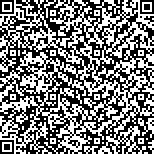| Quote
: |
赵洪庆,杜青,柳卓,向韵,刘林,孟盼,王宇红.不同抑郁模型大鼠行为学及神经营养因子表达的对比研究[J].湖南中医药大学学报英文版,2019,39(7):822-826.[Click to copy
] |
|
| |
|
|
| This paper
:Browser 2237times Download 604times |
| 不同抑郁模型大鼠行为学及神经营养因子表达的对比研究 |
| 赵洪庆,杜青,柳卓,向韵,刘林,孟盼,王宇红 |
| (湖南中医药大学中药粉体与创新药物省部共建国家重点实验室培育基地, 湖南 长沙 410208;湖南省中医药研究院中药研究所, 湖南 长沙 410103) |
| 摘要: |
| 目的 对比分析不同抑郁模型大鼠的生物学特点,为抑郁模型研究提供实验依据。方法 40只SD大鼠随机分为空白对照组、溶媒对照组、束缚应激组、慢性不可预见性温和应激(chronic unpredictable mild stress,CUMS)组,皮质酮注射组,每组8只。除对照组外,各组分别进行造模,时间均为21 d,造模结束后采用Morris水迷宫测试、旷场实验、强迫游泳实验检测大鼠的抑郁样行为,蛋白印迹法检测大鼠海马和前额叶皮质区脑源性神经营养因子(brain-derived neurotrophic factor,BDNF)、神经生长因子(nerve growth factor,NGF)的含量。结果 与对照组比较,3种模型组大鼠逃避潜伏期时间均显著增加(P<0.01),但只有皮质酮组大鼠进入目标象限潜伏期时间增加(P<0.05);旷场测试中活动次数显著下降,其中CUMS组和皮质酮组对比束缚组有显著差异(P<0.01);同时,3种模型组大鼠强迫游泳中的不动时间均显著增加(P<0.01);此外,与对照组比较,各模型组大鼠海马和前额叶皮质区BDNF、NGF表达均显著下降(P<0.01或P<0.05),但各模型组之间相互比较,差异无统计学意义(P>0.05)。结论 慢性束缚应激、CUMS、慢性皮质酮注射均能使大鼠产生明显的抑郁样行为,且在脑内神经营养表达上差异无统计学意义。 |
| 关键词: 抑郁模型 慢性不可预见性温和应激 束缚应激 皮质酮注射 神经营养因子 |
| DOI:10.3969/j.issn.1674-070X.2019.07.007 |
| Received:May 16, 2018 |
| 基金项目:国家自然科学基金(81403387,81603604);湖南省自然科学基金(2016JJ4064,2018JJ3388);湖南省教育厅项目(17C1210,18B238)。 |
|
| Comparative Study on the Behavior and the Expression of Neurotrophic Factors in Different Depressive Model Rats |
| ZHAO Hongqing,DU Qing,LIU Zhuo,XIANG Yun,LIU Lin,MENG Pan,WANG Yuhong |
| (Provincial and Ministerial Co-construction State Key Laboratory Breeding Base for Chinese Medicine Powders and Innovative Drugs, Hunan University of Chinese Medicine, Changsha, Hunan 410208, China;Institute of Chinese Medicine, Hunan Academy of Chinese Medicine, Changsha, Hunan 410103, China) |
| Abstract: |
| Objective To compare and analyze the biological characteristics of different depression model rats, and to provide experimental basis for the study of depression models. Methods A total of 40 SD rats were randomly divided into a blank control group, a vehicle control group, a restraint stress group, a chronic unpredictable mild stress (CUMS) group and a corticosterone injection group, with 8 rats in each group. Except for the control groups, each group was modeled separately for 21 days. Morris water maze test, open-field test and forced swimming test were used to test the rats' depression-like behaviors. The protein expressions of brain-derived neurotrophic factors (BDNF) and nerve growth factors (NGF) in the hippocampal and prefrontal cortex were detected by Western blotting. Results Compared with the control groups, the escape latency time of the 3 model groups was significantly increased (P<0.01), but only the target quadrant time of rats in the corticosterone injection group was increased (P<0.05). The number of activities in the open-field test was decreased significantly, and the numbers in the CUMS group and the corticosterone injection group were significantly different from that in the restraint stress group (P<0.01). Meanwhile, the immobility time of rats in the 3 model groups was significantly increased (P<0.01). In addition, compared with the control groups, the expressions of BDNF and NGF in hippocampal and prefrontal cortex in each model group were significantly decreased (P<0.01 or P<0.05), but there was no significant difference between each 2 model groups (P>0.05). Conclusion Chronic restraint stress, CUMS and chronic corticosterone injection can produce significant depressive behaviors in rats, and there is no statistically significant difference in the neurotrophic expression of the brain. |
| Key words: depressive model chronic unpredictable mild stress restraint stress corticosterone injection neurotrophic factor |
|

二维码(扫一下试试看!) |
|
|
|
|


